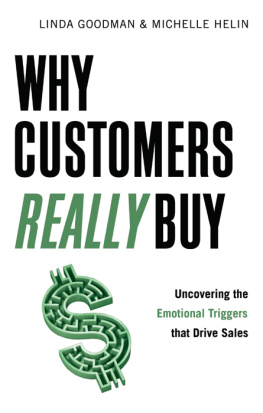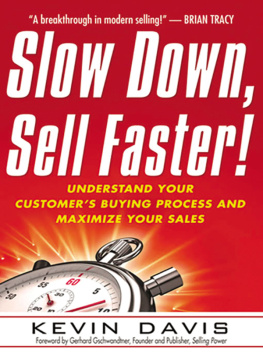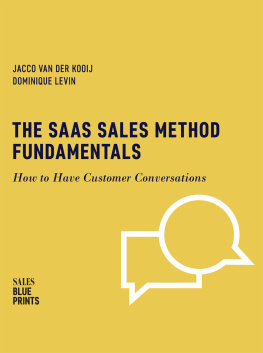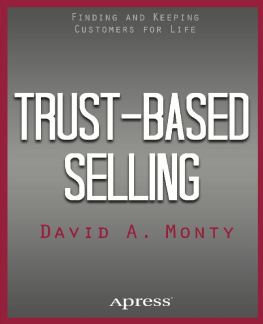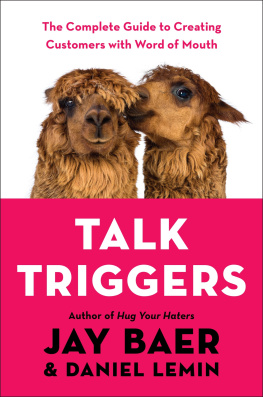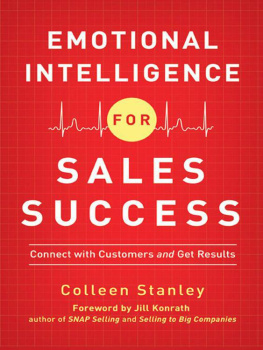
Michelle and Linda bring a clear understanding of what drives customer decision making, opening up previously unseen opportunities for growth.
Doug Fields,
President, VAM Drilling USA, Inc., Vallourec Group
If there was ever a time for breakthrough insights into what drives customers to act and lead businesses to opportunity, this is it. The powerful tools Helin and Goodman have created with emotional-trigger research have given businesses around the world the strategies they needed to fuel growth, engage customers, and transform their markets in today's rapidly shifting landscape.
Russ Setzkorn,
Former Communications Executive, Compaq Computers
Michelle and Linda have done a great job of providing very specific and usable techniques to help any company strengthen its sales efforts. This book really teaches how to get into the head of a prospect and solve their problem, while successfully winning new business.
David Ferdman,
President, CyrusOne
The increasingly difficult challenge of creating business value and sustaining growth make the lessons of Why Customers Really Buy invaluable. Helin and Goodman's technique for tapping into the emotional triggers that drive sales provide critical information needed to master customer-relationship management and deliver value to customers. An essential primer for every business leader!
Connie Lange Merrill, PhD,
Professor, Jones Graduate School of Management,
Rice University, Former Executive with Shell Oil Company
Goodman and Helin lay out a practical process to capitalize on the growing field of learning in emotion-based decision-making. Ultimately their process will lead you to discover how to sell more and spend less, doing so by finding out what compels your prospects to buy, or not to buy.
Fredricka Brecht,
Chair, Vistage International
In this empowerment age, service-provider selection is personal and illogical. Linda and Michelle's insights make sense of it all. This book and their work have helped us strike a competitive advantage by getting the right message out to our market in our sales approach.
Kathleen Margolis,
Chief Marketing Officer, FKP Architects
Understanding customer behavior is a challenge all organizations face in today's ever-changing environment. Why Customers Really Buy illustrates the importance of utilizing emotional triggers to connect with customers and overcome strategic challenges.
Jeffrey C. Miller, President, Thomson Plastics, Inc.
I've worked with Michelle and Linda for many years and have seen firsthand the power of their methodology. For many of my clients, their findings have triggered a game-changing reinvention of their business.
Ward Pennebaker,
Founding Partner, Pennebaker/fifthring

This edition first published in 2009 by Career Press, an imprint of
Red Wheel/Weiser, LLC
With offices at:
65 Parker Street, Suite 7
Newburyport, MA 01950
www.redwheelweiser.com
www.careerpress.com
Copyright 2009 by Linda Goodman and Michelle Helin
All rights reserved. No part of this publication may be reproduced or transmitted in any form or by any means, electronic or mechanical, including photocopying, recording, or by any information storage and retrieval system, without permission in writing from Red Wheel/Weiser, LLC. Reviewers may quote brief passages.
ISBN: 978-1-60163-041-4
Library of Congress Cataloging-in-Publication Data
Goodman, Linda
Why customers really buy : uncovering the emotional triggers that drive sales / by Linda Goodman and Michelle Helin.
p. cm.
Includes index.
ISBN 978-1-60163-041-4
1. Consumer behavior. 2. MarketingPsychological aspects.
I. Helin, Michelle. II. Title.
HF5415.32.G66 2009
658.8'342--dc22
2008031776
Cover design by Rob Johnson/Johnson Design
Interior by Michael Fitzgibbon
Printed in the United States of America
IBI
10 9 8 7 6 5 4 3 2 1
www.redwheelweiser.com/newsletter
Acknowledgments
We've been fortunate that so many people have been an ongoing source of encouragement, support, and guidance throughout the process of writing this book.
It was Beth Ravit, who began as our client and later became our good friend, who first urged us to share our technique of emotional-trigger research. We are grateful for her input and for her steadfast belief that our story should be told.
The contributions of our colleague and dear friend, Ric Wanetik, are too numerous to list. Ric's vision gave the book its shape and direction. His creativity, professional insights, and boundless generosity were invaluable and will always be remembered as a treasured gift. We are profoundly grateful.
Judith Rothman, a longtime friend and respected publishing executive, was a ceaseless champion of our project. We could not have wished for direction from anyone more devoted or more knowledgeable. We deeply appreciate all her help, the doors she opened, and the introduction to John Willig, our wonderful agent.
As our mentor and advocate, we thank John for always believing in us. We know how lucky we are to have him in our corner.
A special recognition to Shirley Dion, Lois Winsen, and Dr. Louise Menlo, who not only shared their friendship, but were professional sounding boards we turned to frequently, and who always helped steer us in the right direction. And to Grady Harrison, whose understanding of the complexities of today's global marketplace made us smarter.
We especially thank our partners at Career Press, for making our first publishing experience such a positive one.
Finally, to our many clients whom we've had the privilege of working with over the years, it is you who made this book possible.
Contents
Introduction
Facts and truth really don't have much to do with each other.
William Faulkner
The motivations customers act on are seldom logical, predictable, or even conscious. Instead, their strongest responses stem from one source: emotion. It's a deceptively simple reality, one that the business world has resisted, preferring instead to concentrate on quantifiable explanations for customer behavior. But whether customers are consumers or other businesses, all customers are people. And people are emotional beings. Despite any posturing to the contrary, decisions are swayed by emotion. When this emotional dynamic is acknowledged, it changes the way organizations must go about understanding their customers. It changes the way companies must make decisions. It changes the search for clarity.
That poses a difficult question. Exactly what is the best way to achieve clarity? As we began to consider this question, we came to recognize the connection between the method by which information is acquired and the frequently misleading information that is collected. Typically, studies are one dimensional. They are designed to collect a series of facts. Yet depending on how those facts are compiled, a number of contradictory interpretations are possible. The missing component in the research is insight.
We define insight as the difference between what is technically accurate versus what is real and enlightening. It's the engine that drives the decisions that solve problems. Admittedly, insight has become the fashionable buzz word for research. Articles are written about it. Books are devoted to the topic. Speeches are given on it. Courses on the subject are available at colleges and universities. The term is even incorporated into the title of marketing associates at many companies. But labeling research findings as insights doesn't make them so.
Next page
